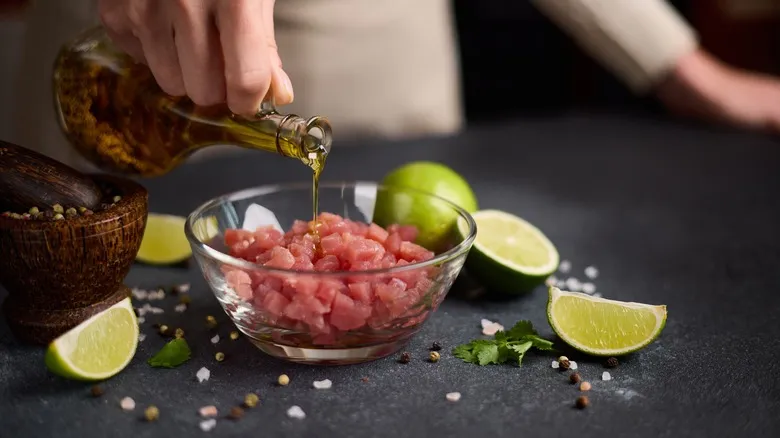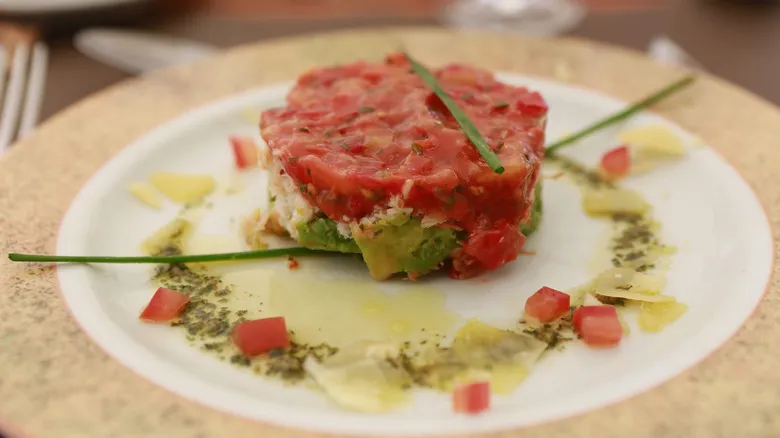Tuna tartare was invented as a substitute for beef

Tuna tartare made its debut in 1984, but its roots trace back much further to the creation of steak tartare. The exact origins of steak tartare remain uncertain, with a popular tale linking it to the Mongol warriors of Genghis Khan, known as Tartars, who allegedly relied on raw horse meat as a primary food source. However, evidence supporting this narrative is scarce. The contemporary version of steak tartare took shape in France, with one of the earliest recipes published by the esteemed chef Auguste Escoffier in 1921. From that point, steak tartare became a fixture in restaurants, and raw beef laid the groundwork for numerous beloved dishes, including the cannibal sandwich.
Shigefumi Tachibe created tuna tartare as an alternative to beef tartare. In 1984, while working as a chef at Chaya Brasserie in Los Angeles, he offered a prix-fixe menu that featured steak tartare as an appetizer. One day, a group of diners requested a lighter option instead of steak tartare, coinciding with the rise of the low-fat trend. In search of a substitute, Tachibe discovered that the dark red tuna he had on hand resembled beef. He decided to replace the meat with fish, and the customers were so enamored with the dish that they urged him to include it on the regular menu. Today, the knife Tachibe used to prepare the first tuna tartare is showcased in the Smithsonian Museum, as that pivotal moment transformed America's culinary scene forever.
Tuna tartare's rise to fame

Tuna tartare gained popularity during a time of culinary creativity. Many American diners were moving away from rich dishes featuring heavy ingredients like red meat, butter, and cream. Shigefumi Tachibe also noted that the warm climate of Los Angeles lent itself to lighter fare. The 1980s marked a transformative period in the California dining scene, largely driven by chef Wolfgang Puck, who gained recognition for merging European culinary techniques with East Asian flavors and fresh, local ingredients. As a result, raw fish became less of a novelty, creating the perfect conditions for tuna tartare to flourish.
At Chaya Brasserie, Tachibe elevated tuna tartare to a prominent position, prompting other chefs to join the trend. Puck was a leading figure in this movement, featuring tuna tartare as a signature dish at his renowned restaurant, Spago. The primary ingredient remains consistent: finely chopped raw tuna, though not as finely as tuna scrape. The accompaniments can vary, allowing chefs to put their own spin on the dish. To stay true to the original recipe, however, opt for Tachibe's favored ahi tuna and combine it with egg yolks, Dijon mustard, pickles, onions, capers, tarragon, and green peppercorns.
Recommended

What Flavor Are Candy Circus Peanuts, Anyway?

The Exact Difference Between Maine And Connecticut Lobster Rolls

Why Mountain Dew Is So Beloved In Appalachia

What Is A Boilermaker, And What's The Right Way To Drink It?
Next up

